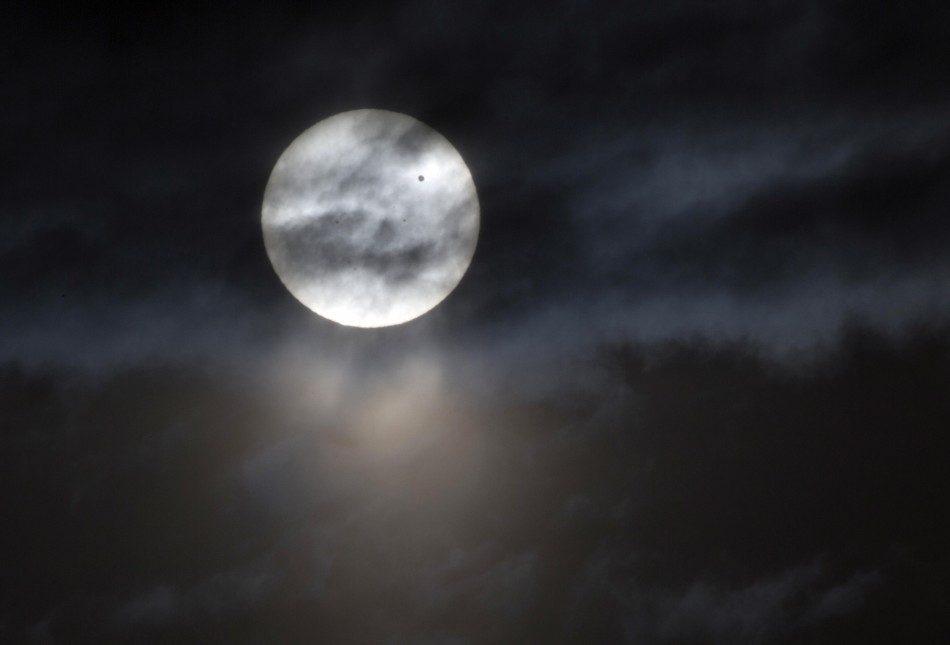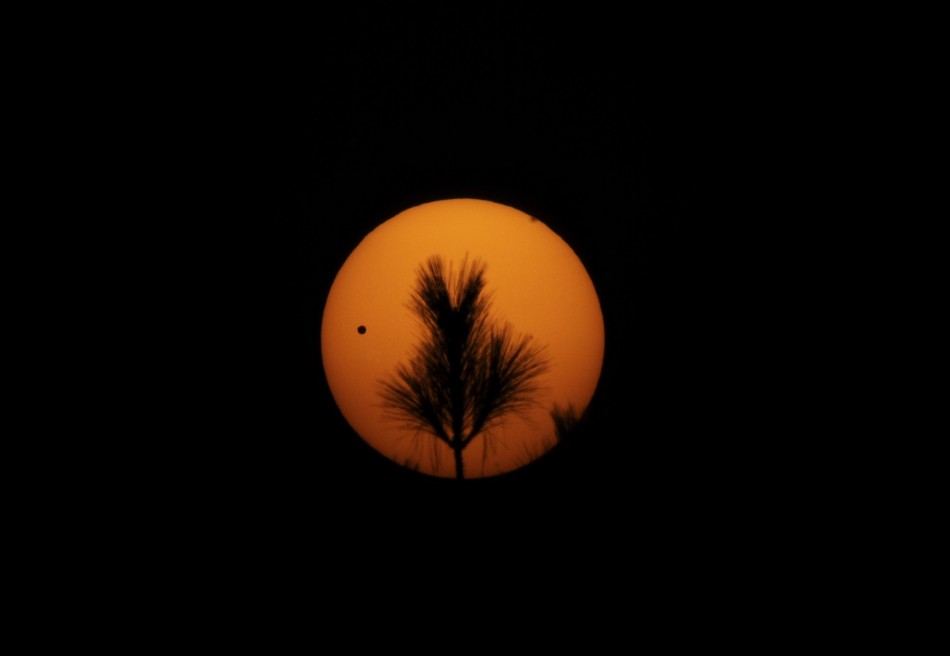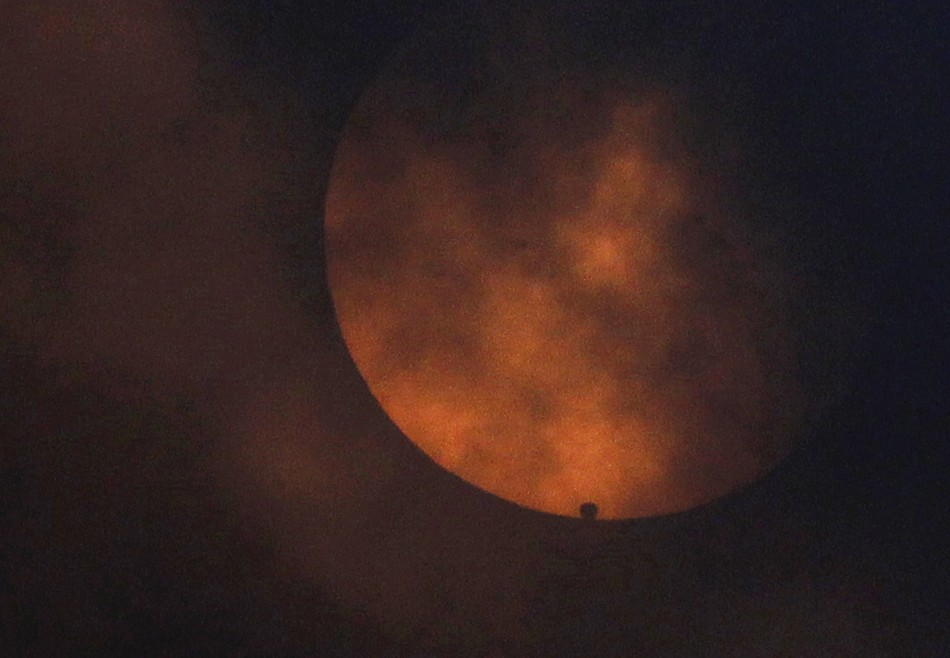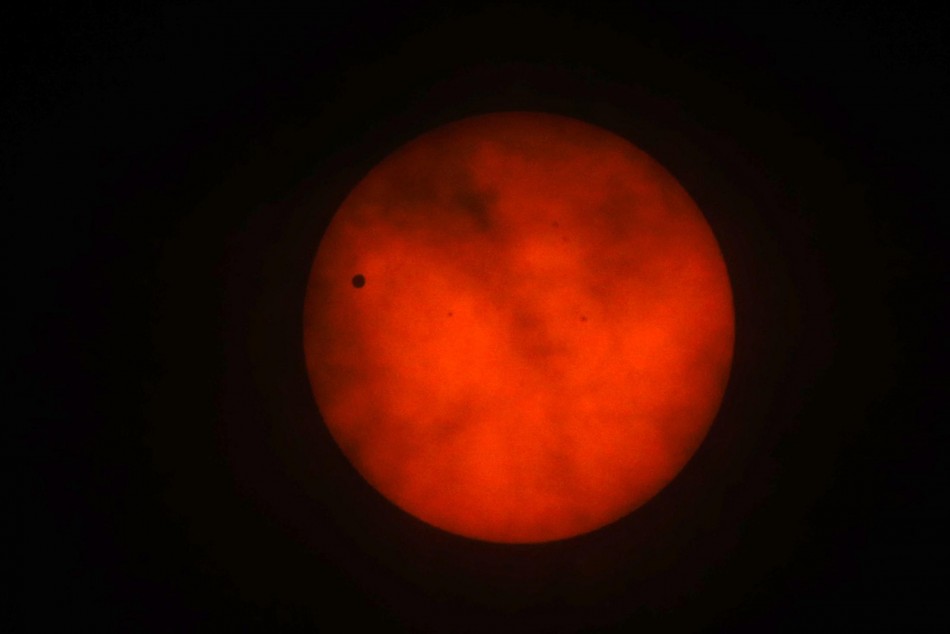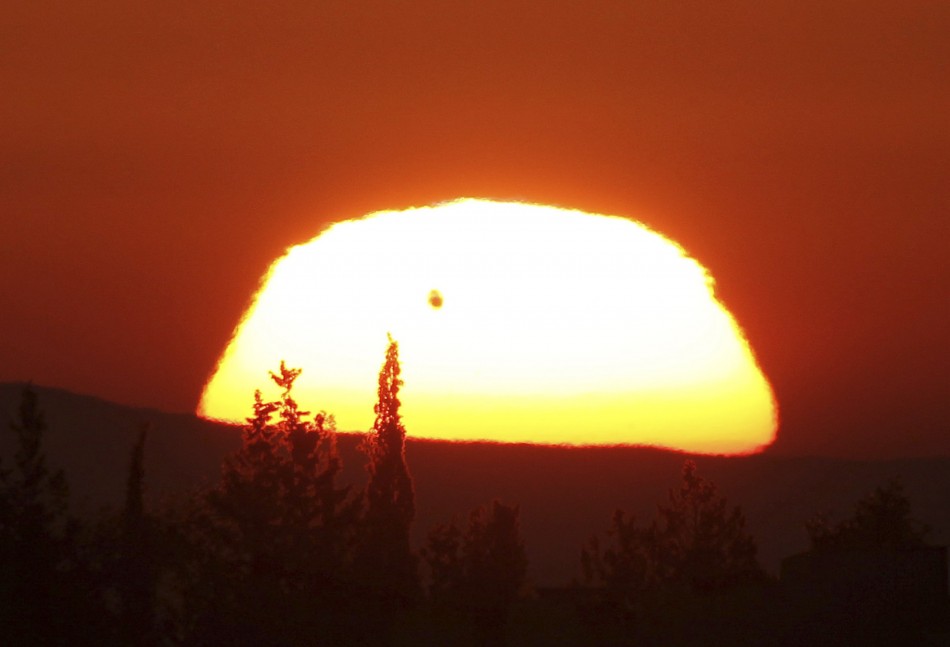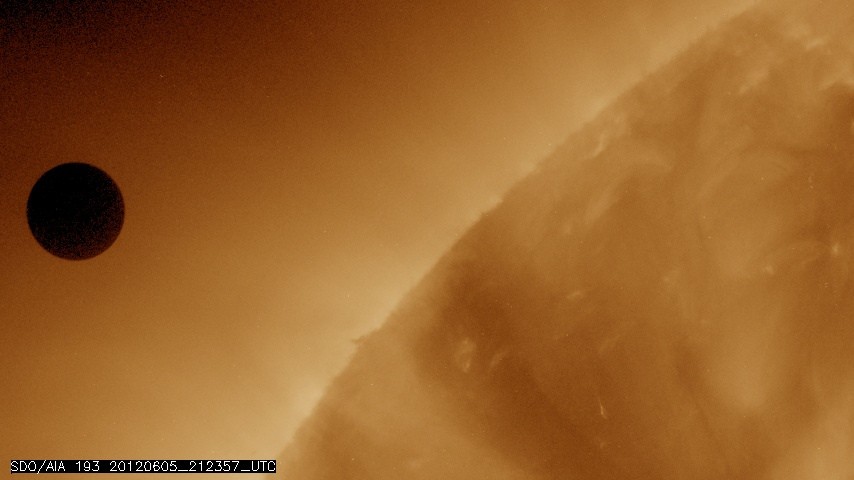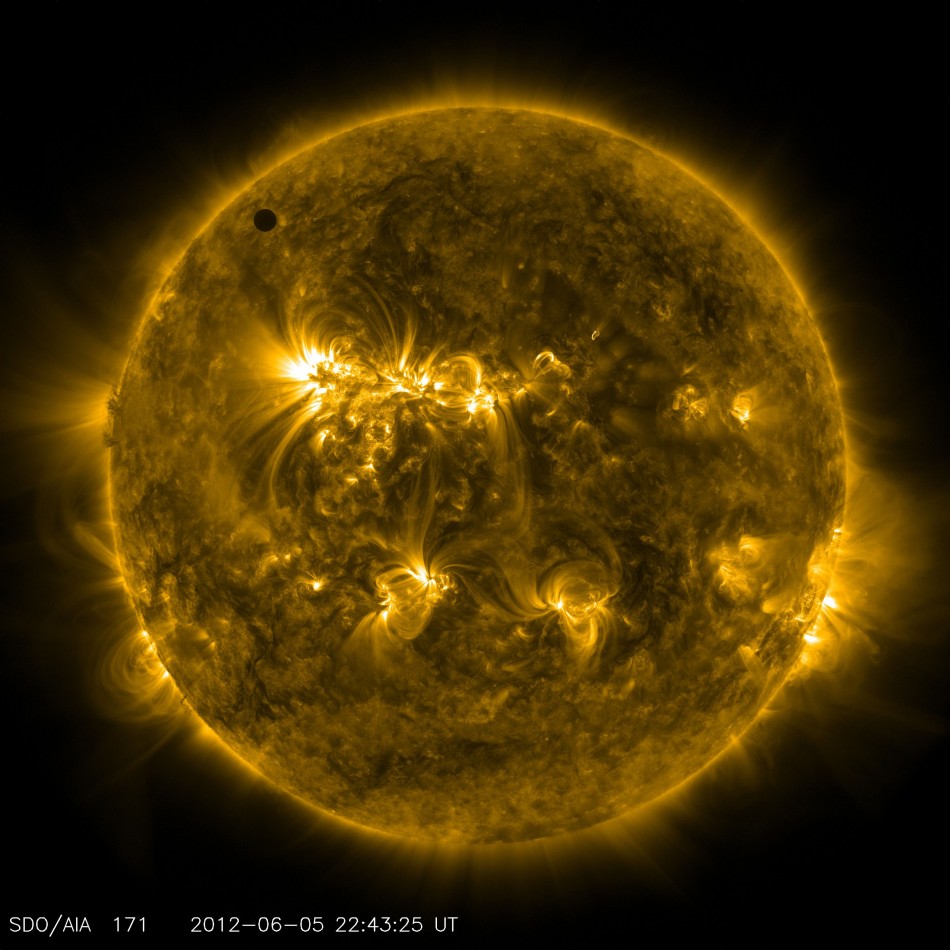Sky-gazing enthusiasts around the world witnessed the once-in-a-century celestial phenomenon of Venus sliding across the sun on June 5 and 6.
Using a telescope, various regions in western Pacific, eastern Asia and eastern Australia viewed the entire spectacle of Venus' strategic position that appeared as a speck of a mole on the fiery planet.
Here in India, the transit commenced on Wednesday at 03:40 am and continued until 10:19 a.m. Last time, this rare astronomical event took place on June 8, 2004, with the transit occurring in pairs. June 6 marks the completion of Venus pivoting across the solar disc, with the next transit cycle not due for another 105 years until 2117.
Several public viewings were organised so as to witness the rare phenomenon. Nehru Planetarium in the capital city Delhi organised viewings with telescopes and solar filters put up at Teen Murti lawns in Chanakyapuri.
Science Popularisation Association of Communicators & Educators (SPACE) took 50 students to Shanghai, China, to observe the transit. The Venus transit was visible for the longest period in China.
In Chennai, Birla Planetarium made special arrangements for skygazers. Over 5,000 people had reportedly visited the planetarium to witness the celestial event.
It was a big disappointment for school children in Thiruvananthapuram, Kerala as monsoon had affected the children's chances to see the Venus transit.
The spectacle is of special importance in the Indian continent which is considering a scientific mission to Venus. The Venus-bound spacecraft may function on an unmanned operation and is expected to carry around just five scientific instruments to help carry out preliminary studies on terrestrial planets.
The nation, which is quickly becoming a hub for astronomical research and development, is also expected to benefit from studies concerning such transits.
"The aim is to give awareness about the planets and the Earth in order to save the environment and to lead our future generations towards a safe and happy life without interference," Dr. K.Ganesan, Assistant Professor of Commerce, Vivekananda college of Agasthiswaram in Kanyakumari told IB Times.
Here's a look at the spectacular images of the Venus transit captured from around the world.
With inputs from Correspondent Ankita Mehta reporting from Kanyakumari.


